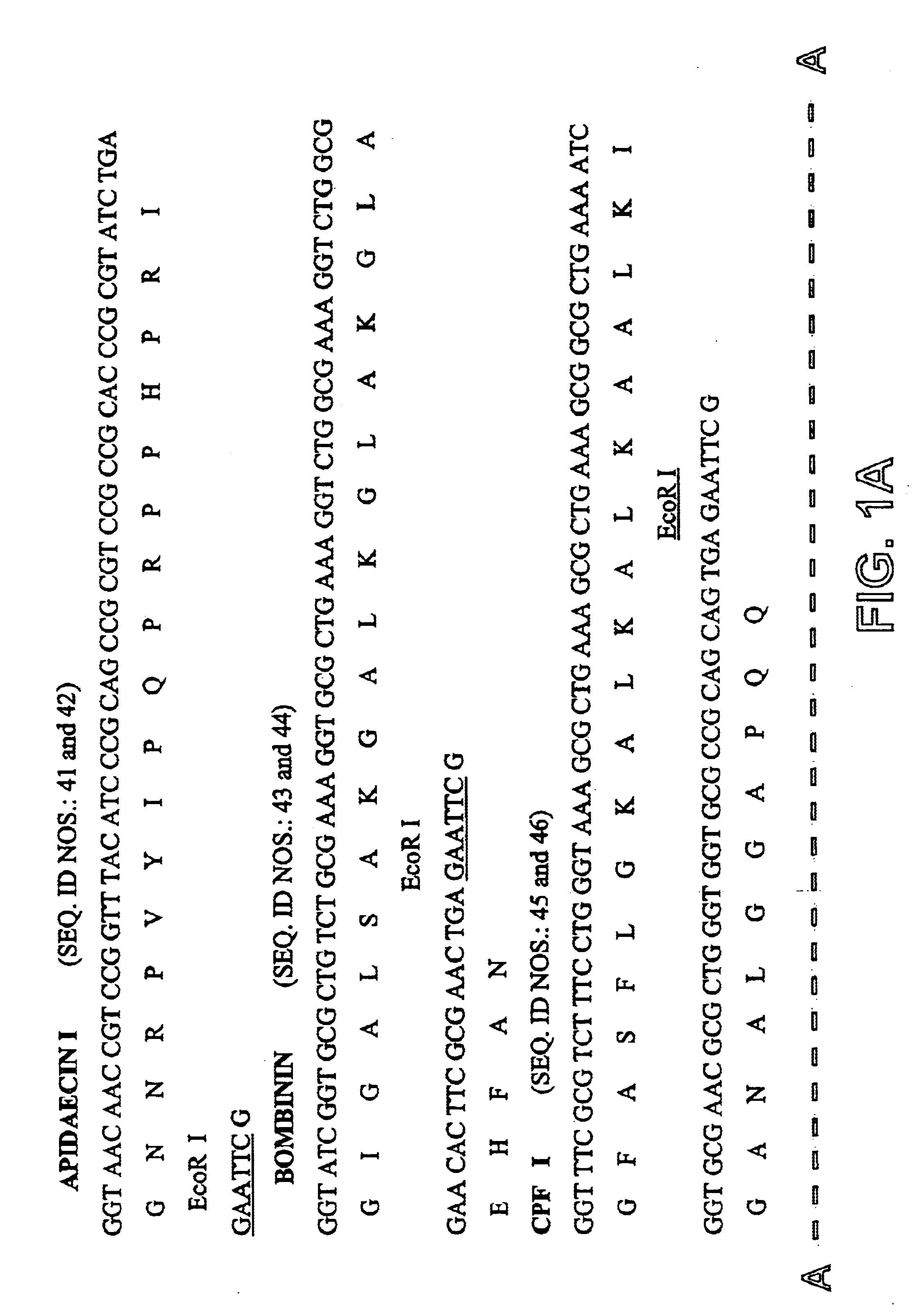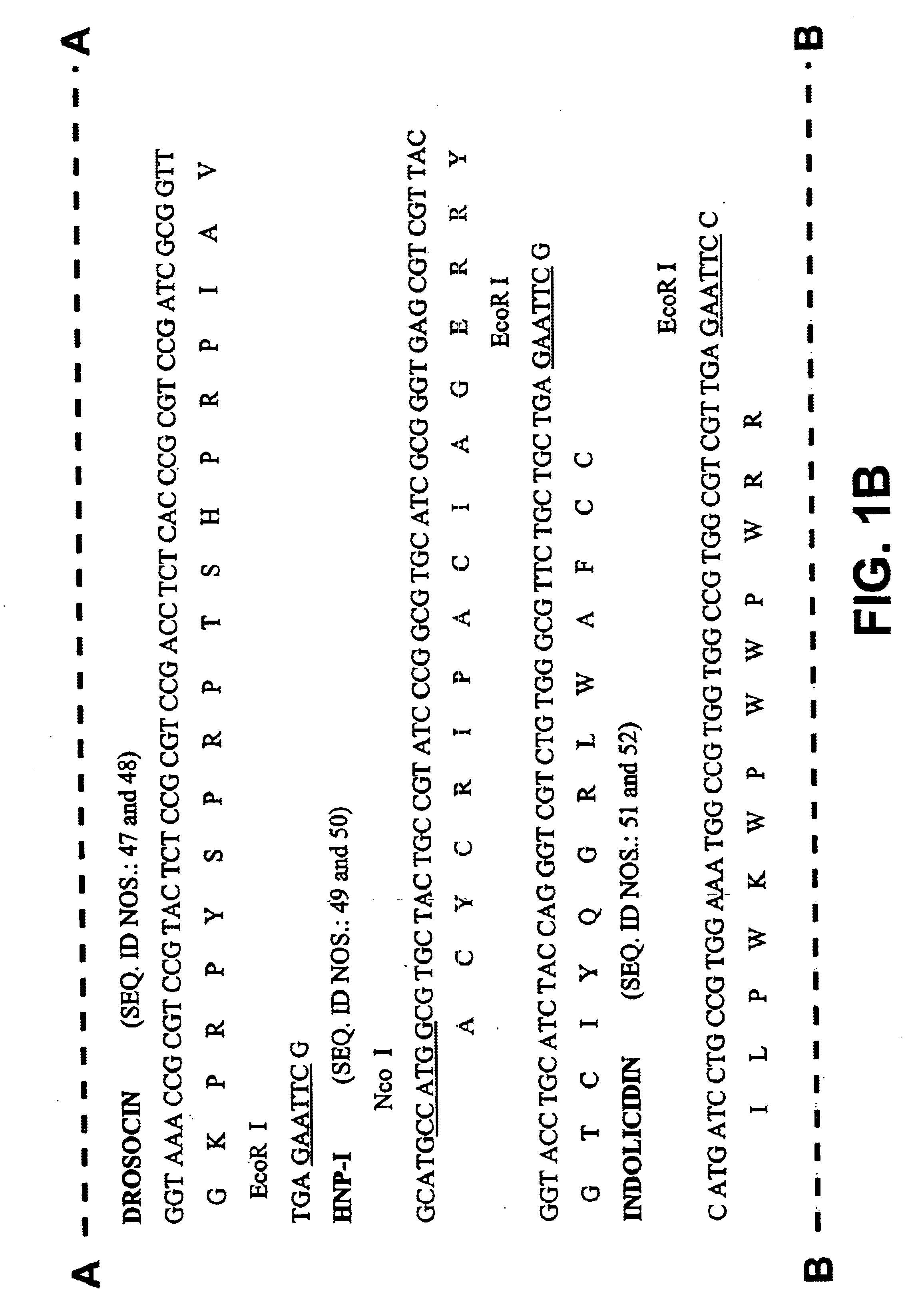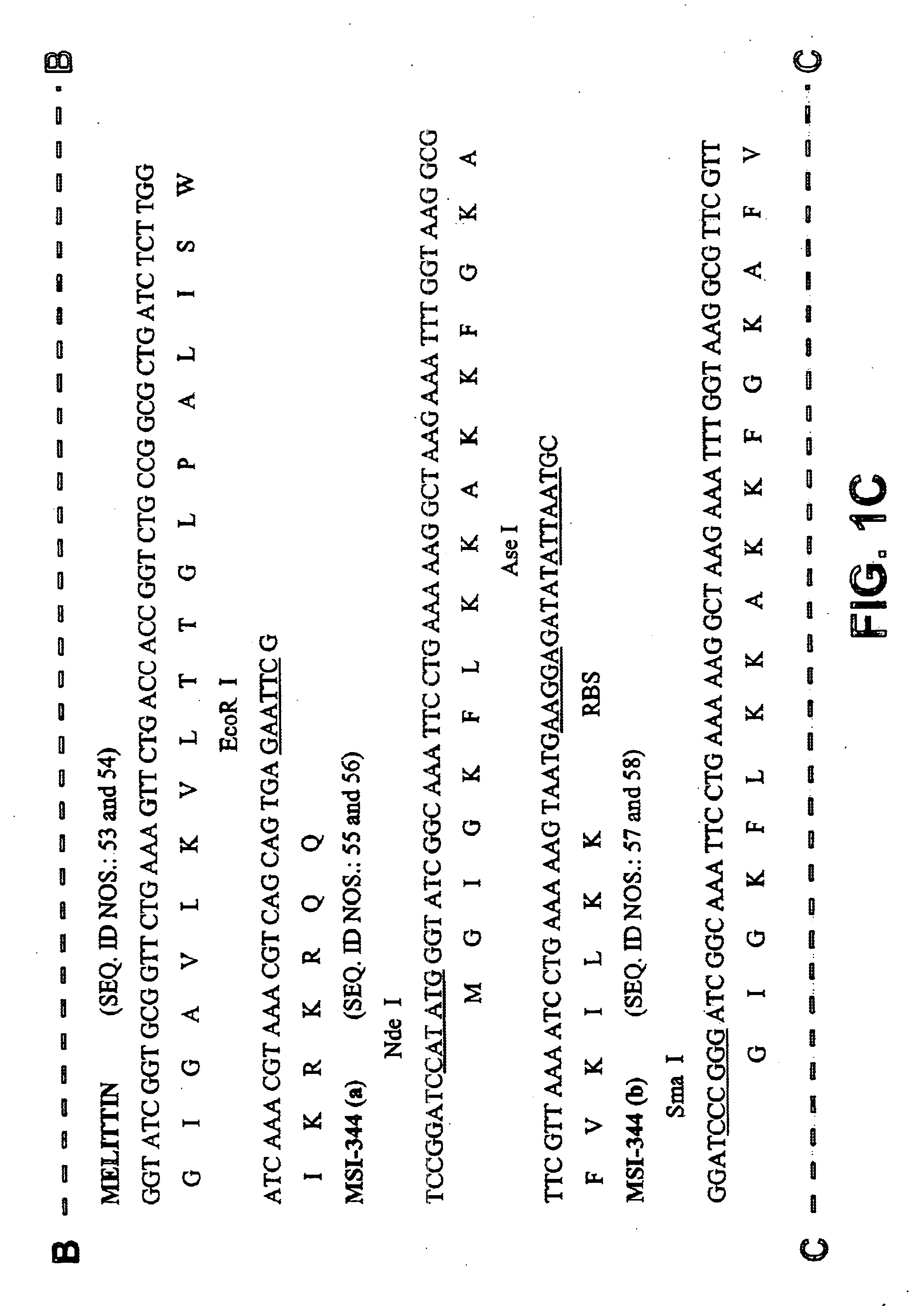Mass production method of antimicrobial peptide and DNA construct and expression system thereof
a technology which is applied in the field of dna constructs and expression systems thereof, can solve the problems of difficult economic mass production of antimicrobial peptides, low expression levels of antimicrobial peptides, and inability to meet the needs of peptide production and other problems
- Summary
- Abstract
- Description
- Claims
- Application Information
AI Technical Summary
Benefits of technology
Problems solved by technology
Method used
Image
Examples
example 2
Preparation of Fusion Partner
To use as a fusion partner, purF derivatives shown in FIG. 2 were obtained from the chromosomes of E. coli and Bacillus subtilis using PCR. The fusion partner F was prepared by CNBr cleavage, and F', F5 and BF by for hydroxylamine cleavage. F3 and F4 were prepared as two different forms; one for CNBr cleavage (F3(CB), F4(CB)), and another for hydroxylamine cleavage (F3(HA), F4(HA), F4a(HA)). Fusion partners F, F', F3(HA), F3(CB), F4(HA), F4a(HA), F4a(CB), F5, BF are indicated in sequences No. 1-9, respectively.
1) purF derivative F (SEQ ID NO. 73)
The derivative is a coding for 61 amino acid from the N-terminus of the E. coli purF protein (FIG. 2). Nde I site including start codon Met was inserted at the 5' end, and Nde I site including Met codon that encodes cleavage site for CNBr was inserted at the 3' end.
2) purF derivative F' (SEQ ID NO. 75)
To remove the internal hydroxylamine cleavage site, the 49.sup.th glycine residue (GGG) was substituted with alan...
example 3
Preparation of DNA Construct Coding for Fused Peptides
Among the peptide genes prepared in Example 1, the genes encoding peptide that contains glycine at the first amino acid were fused to fusion partners for the hydroxylamine cleavage, F4a(HA), F5 and BF. Other peptides (HNP-I, Indolicidin, Tachyplesin) were fused to the fusion partners for the CNBr cleavage, F, F3(CB) and F4a(CB) (Table 3).
A method of fusion between the fusion partner and the gene coding for an antimicrobial peptide while producing the CNBr cleavage site (Met) or hydroxylamine cleavage site (Asn-Gly) is shown in FIGS. 3 and 4, respectively. In the case of fusion with fusion partner F for CNBr cleavage, the fusion partner and the MSI-344 gene were fused using the Nde I site to produce DNA construct FM (FIG. 3a). In case of fusion with F3(CB) or F4(CB), the peptide genes are chemically synthesized and fused to 3' end BspLU11 I site of the fusion partner by complementary 5' Nco I site for HNP-I, and 5' BspLu11 I site ...
example 4
Preparation of Transcriptionally Fused Multimer
A monomeric unit that can produce multimers was constructed consisting of Nde I site coding for Met, structural gene, RBS (SEQ ID NO. 91), and Ase I site that connects with Nde I to generate Met. As structural genes, F4a(HA)-MS 1344 fusion gene ( F4Ma ) and F5-MSI344 fusion gene ( F5M ) were used. The monomeric units were digested with Nde I and Ase I, and the isolated monomeric units were reconnected. Obtained DNA fragments were digested again with Nde I and Ase I, and the multimers were separated by agarose gel electrophoreses. By using this method, monomer (F4Ma), dimer (F4MaX2) and tetramer (F4MaX4) of F4Ma and monomer (F5M), dimer (Fm5MX2) and tetramer (F5MX4) of F5M were obtained.
PUM
| Property | Measurement | Unit |
|---|---|---|
| pH | aaaaa | aaaaa |
| resistance | aaaaa | aaaaa |
| distance | aaaaa | aaaaa |
Abstract
Description
Claims
Application Information
 Login to View More
Login to View More - R&D
- Intellectual Property
- Life Sciences
- Materials
- Tech Scout
- Unparalleled Data Quality
- Higher Quality Content
- 60% Fewer Hallucinations
Browse by: Latest US Patents, China's latest patents, Technical Efficacy Thesaurus, Application Domain, Technology Topic, Popular Technical Reports.
© 2025 PatSnap. All rights reserved.Legal|Privacy policy|Modern Slavery Act Transparency Statement|Sitemap|About US| Contact US: help@patsnap.com



